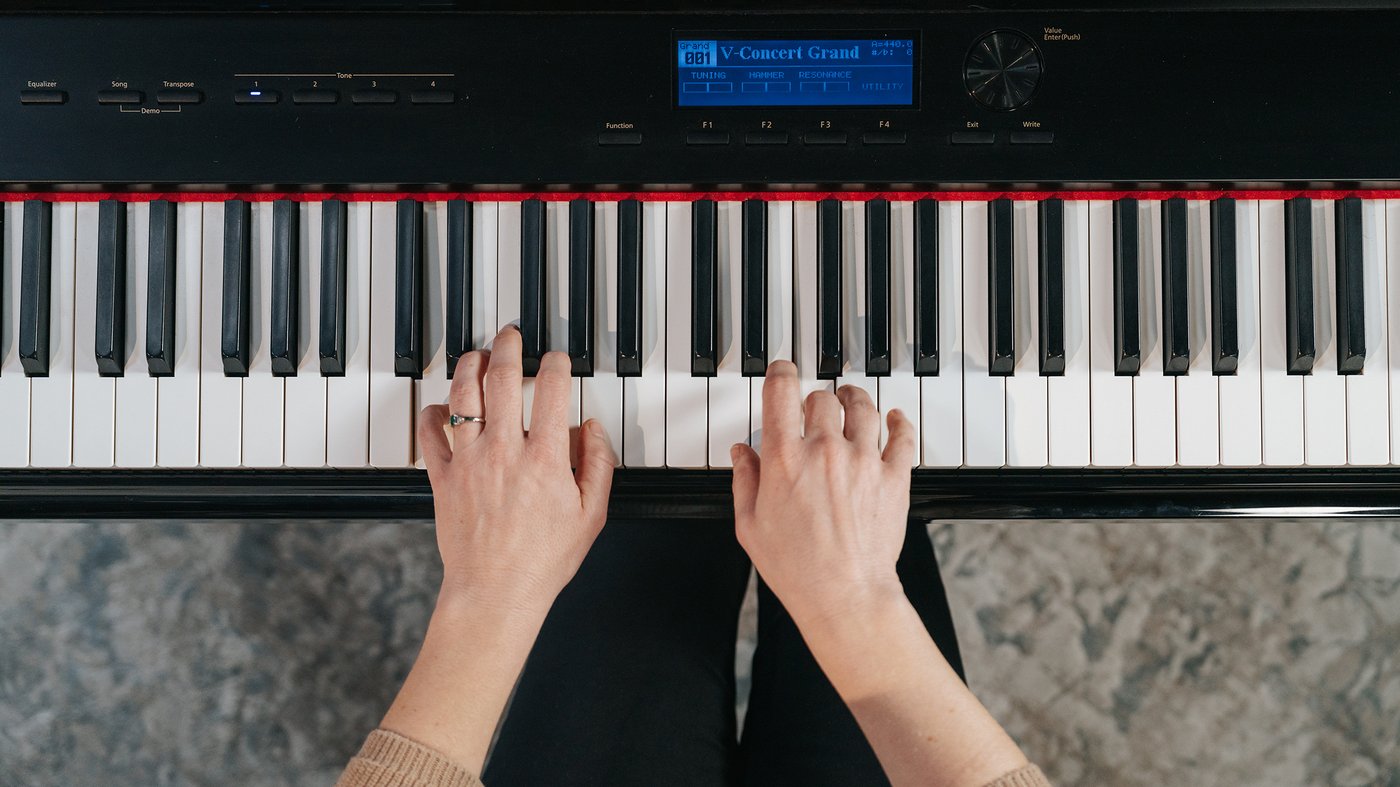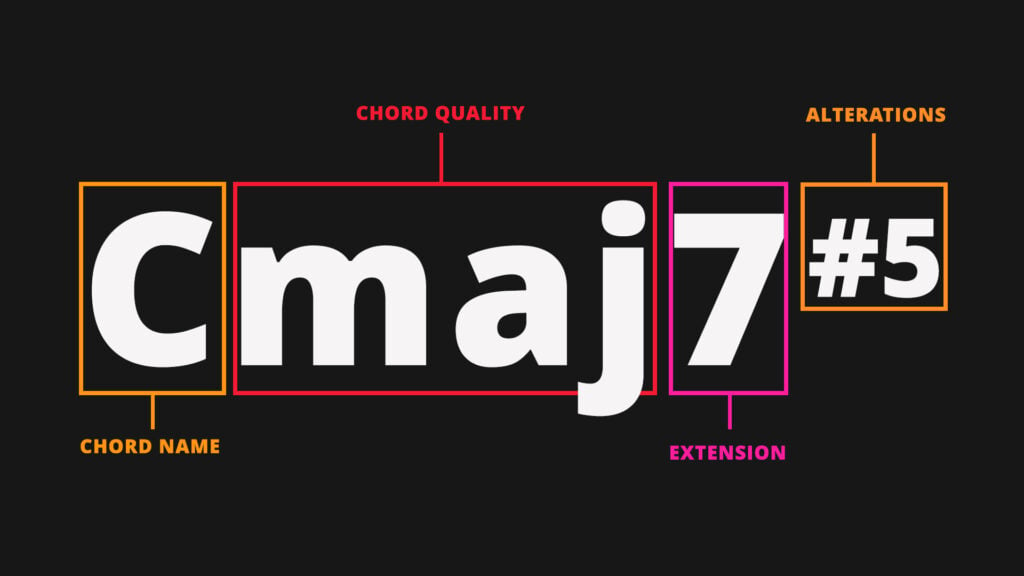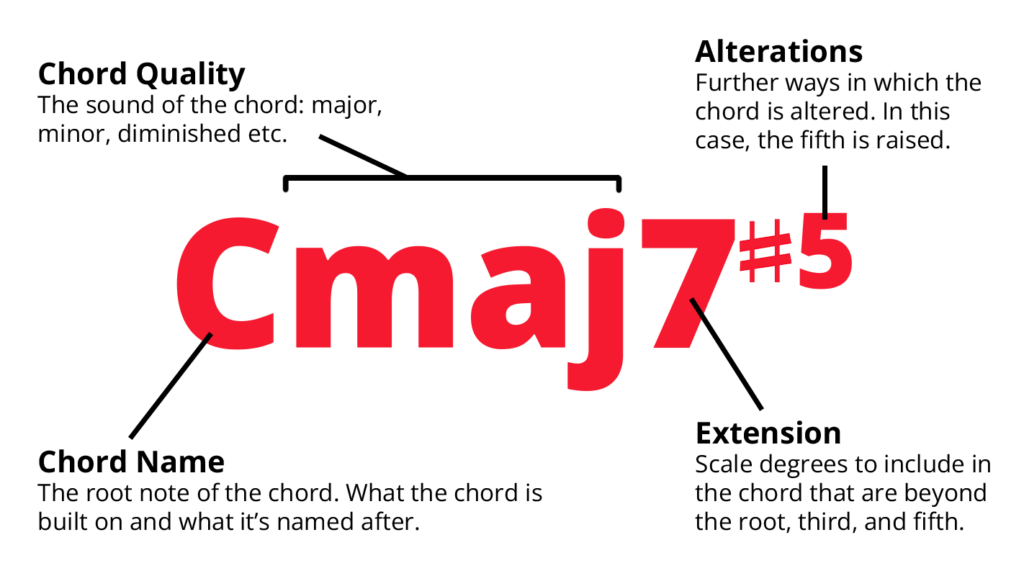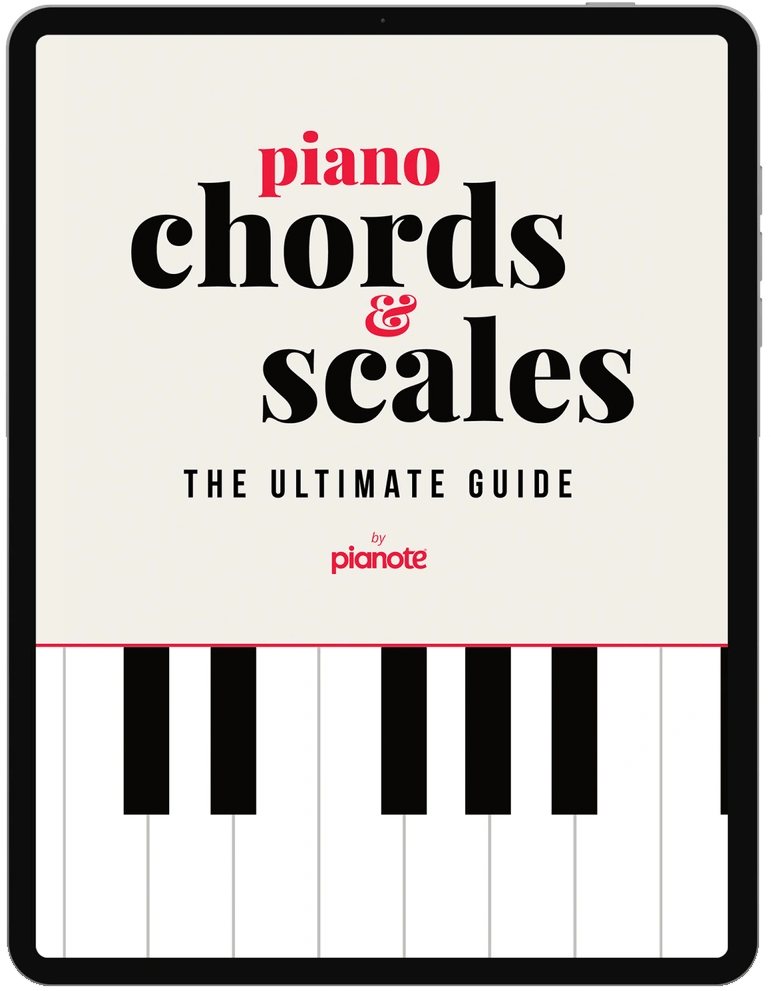

Uppercase M’s, lowercase m’s, triangles, numbers…chord symbols can be confusing!
Here’s a no-nonsense guide designed to quickly explain and decode chord symbols you may run across. For a more comprehensive review of the theory behind chords, check out How to Play ALL Piano Chords and Chord Theory 101.
Table of Contents:
Subscribe to The Note for exclusive interviews, fascinating articles, and inspiring lessons delivered straight to your inbox. Unsubscribe at any time.
We can break down most chord symbols into components that each tell a piece of the chord’s story.

eg. C, D♭
This is the first letter you’ll see and what the chord is named after. This note is the root of the chord, so our chord formulas will be based on its scale.
Eg. M, m, Δ, dim
The letters here will tell you the overall sound of the chord, such as major (“maj” or “Δ” or “M”) or minor (“m”).
| Chord Quality | Symbols You Might See |
|---|---|
| Major | M maj Δ* No symbol** |
| Minor | M – min |
| Augmented | aug + |
| Diminished | dim o |
| Half-diminished*** | ø |
*Some people use Δ to indicate any major tonality; while others use Δ as a shorthand for a major 7th chord.
**Major chords typically omit this component. So, it’s rare that you’ll see “Cmaj.” Most notation will just have “C.” Dominant 7th (eg. C7), power chords (eg. C5), and major 6th chords (eg. C6) also omit this component.
***Half-diminished chords are seventh chords and can also be expressed as “m7♭5.”
Eg. 7, 9, 11, 13
If the chord contains more notes than the root, third, and fifth (triad), a number here will indicate an extension. For example:
Chord extensions are common in jazz.
Eg. ♭5, #5
Additional symbols may be tacked onto the end of the chord to indicate altered chord tones. For example:
These chord symbols can be particularly puzzling for beginners, so here’s a quick explanation:
Here’s a summary of what you might see on a chord chart or lead sheet and what each symbol means.
| Chord Symbols You Might See | Type of Chord | Chord Formula |
|---|---|---|
| C, CΔ, Cmaj | Major triad | 1-3-5 |
| C-, Cm | Minor triad | 1-♭3-5 |
| C+, Caug | Augmented triad | 1-3-♯5 |
| Co, Cdim | Diminished triad | 1-♭3-♭5 |
| C6 Cm6 | 6th chord | 1-3-5-6 1-♭3-5-6 |
| C5 | Power chord | 1-5 or 1-5-1 |
| CΔ7, Cmaj7, CM7 | Major 7th chord | 1-3-5-7 |
| Cm7, C-7 | Minor 7th chord | 1-♭3-5-♭7 |
| Cm(maj7), CmM7, Cm♯7, C−M7, C−Δ7, C−Δ | Minor major 7th chord | 1-♭3-5-7 |
| C7 | Dominant 7th chord | 1-3-5-♭7 |
| Cm7♭5, Cø7 | Half-diminished 7th chord | 1-♭3-♭5-♭7 |
| Co7, Cdim7 | Diminished 7th chord | 1-♭3-♭5-♭♭7 |
| Cmaj9 Cmaj11 Cmaj13 | Major 7th chord with extension | 1-3-5-7-9 1-3-5-7-9-11 1-3-5-7-9-11-13 |
| C9 C11 C13 | Dominant 7th chord with extension | 1-3-5-♭7-9 1-3-5-♭7-9-11 1-3-5-♭7-9-11-13 |
| Cadd9 C6/9 | Add chord | 1-3-5 + 9 1-3-5-6 + 9 |
| Csus4 Csus2 | Suspended chord | 1-4-5 1-2-5 |
| C/E | Slash chord | Play the chord on the left with your right hand “over” the note on the right with your left hand. |
The Piano Chords & Scales book is one of our top-selling products of all time. Now, you can get it electronically for free. That means you can instantly look up scales and chords on your phone, tablet, or laptop without hunting for WiFi. The book contains major, blues, pentatonic, and all three minor scales. Plus major, minor, and 7th chords in all inversions, and sus chords.

An important thing to remember is that when you see a chord symbol on a lead sheet, you don’t have to play every single note in that chord symbol.
For example, if you see C13, you don’t have to play C-E-G-B♭-D-F-A. That’s a lot of notes and it’ll sound muddy! Instead, musicians usually use chord symbols as a guide. So for C13, you may play C-E-B♭ with your left hand and improvise with D, F, and A in your right hand.
In jazz lead sheets, the extension number sometimes points to a note in the melody.
We hope you found this post helpful! Happy chording 🎹
Get a deeper dive into piano, sight reading, and theory as a Pianote+ Member. You’ll get access to our 10-step Method, song library, and growing community of piano players just like you. Plus: get coached by world-class pianists and learn whenever you want, wherever you want, and whatever you want.
TRY PIANOTE FOR 7 DAYSCharmaine Li is a Vancouver writer who has played piano for over 20 years. She holds an Associate diploma (ARCT) from the Royal Conservatory of Music and loves writing about the ways in which music—and music learning—affects the human experience. Charmaine manages The Note. Learn more about Charmaine here.


By signing up you’ll also receive our ongoing free lessons and special offers. Don’t worry, we value your privacy and you can unsubscribe at any time.
We use cookies for traffic data and advertising. Cookie Policy »